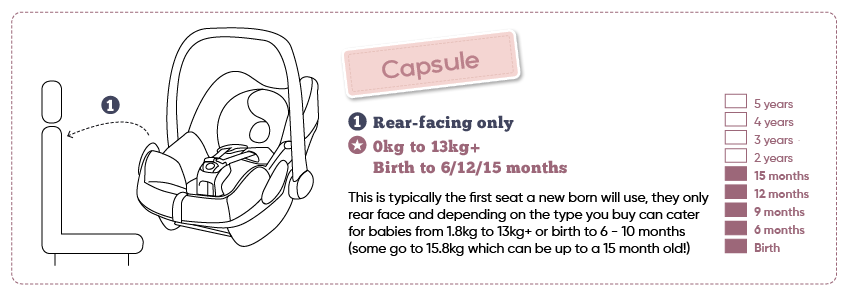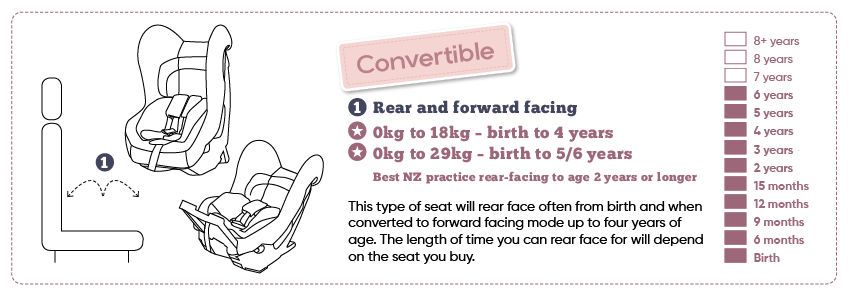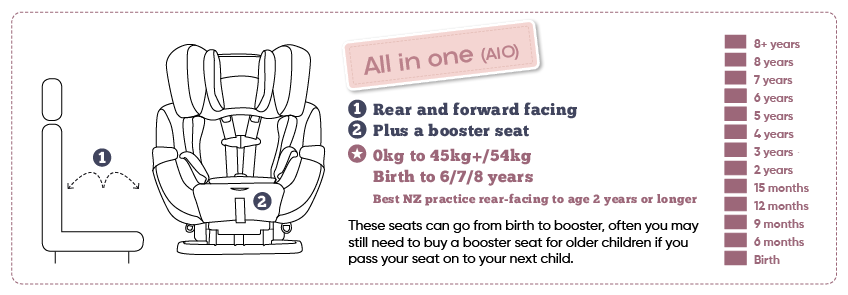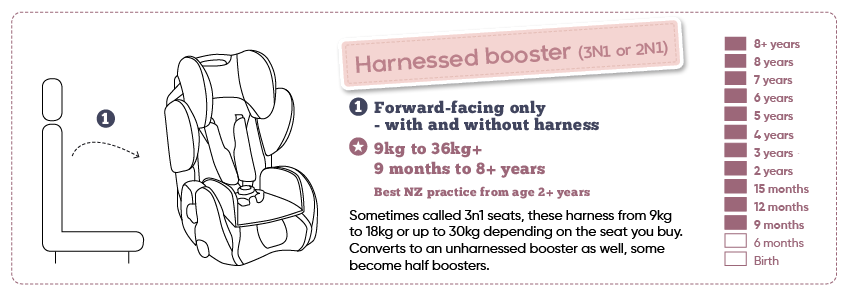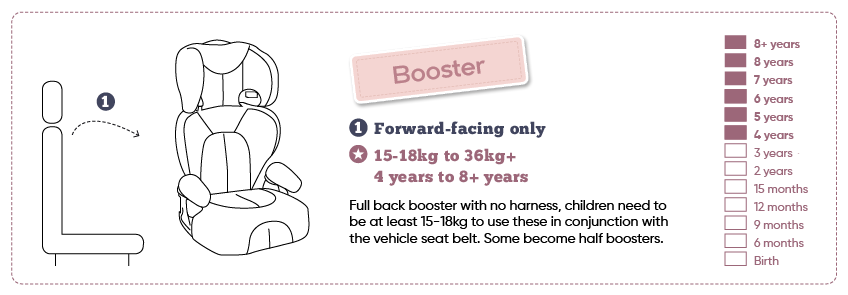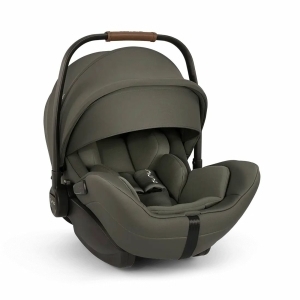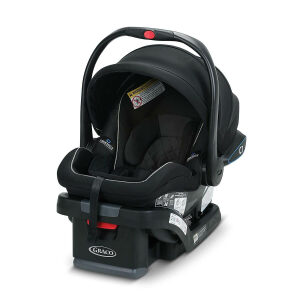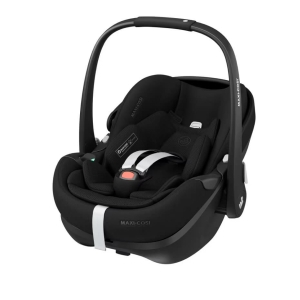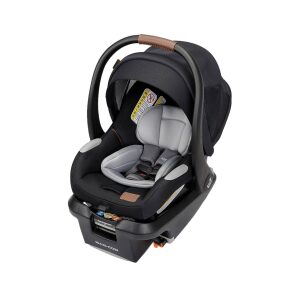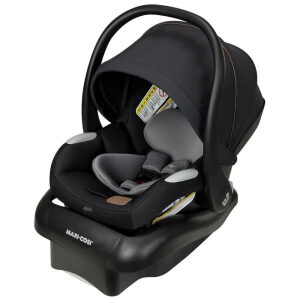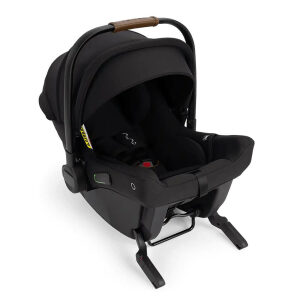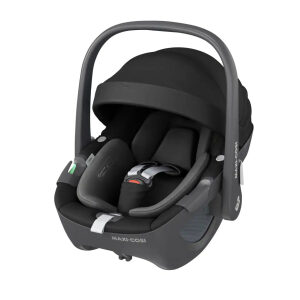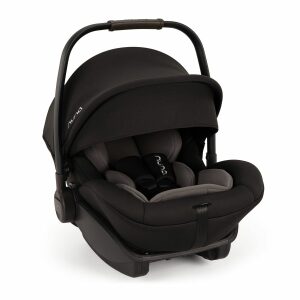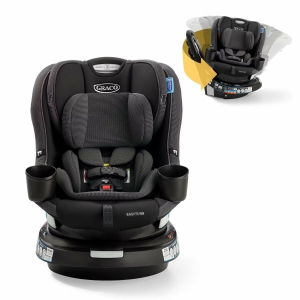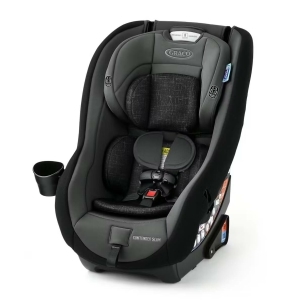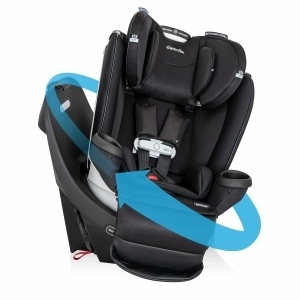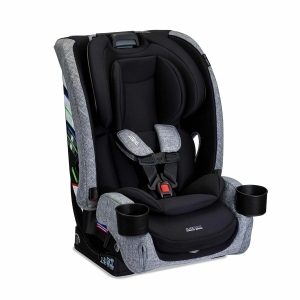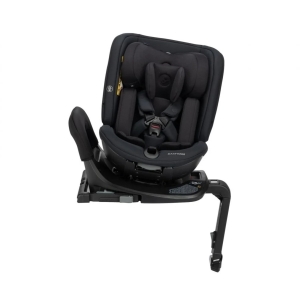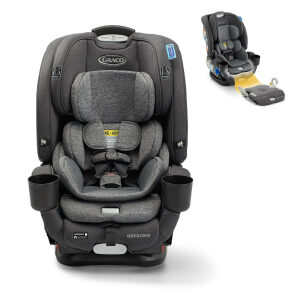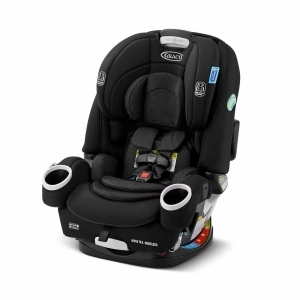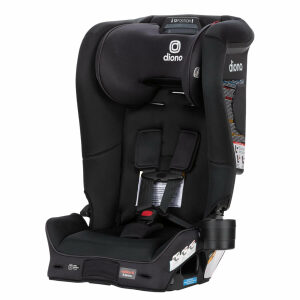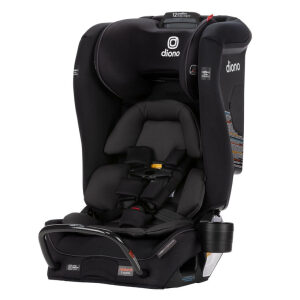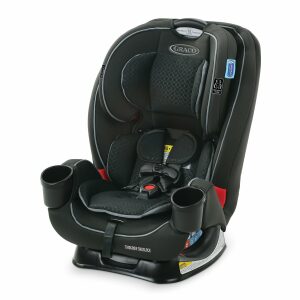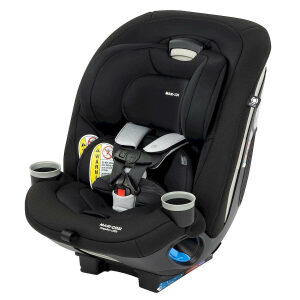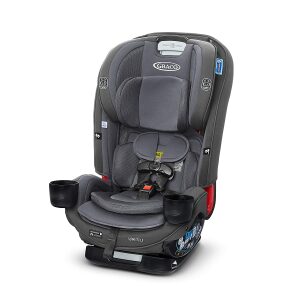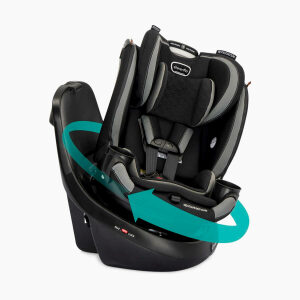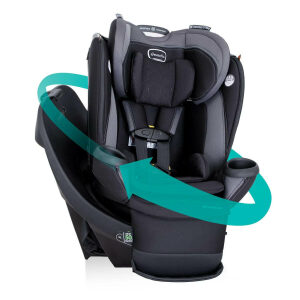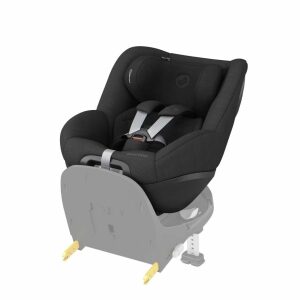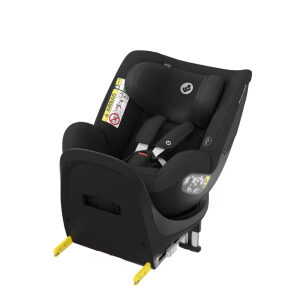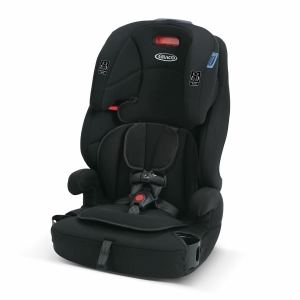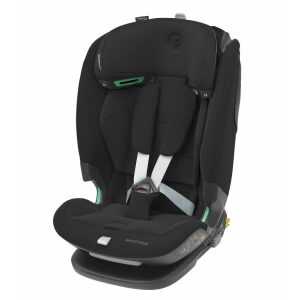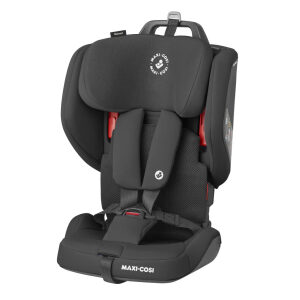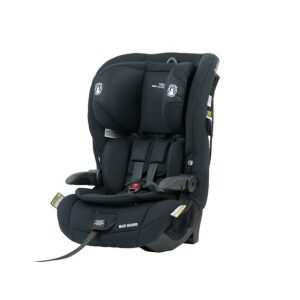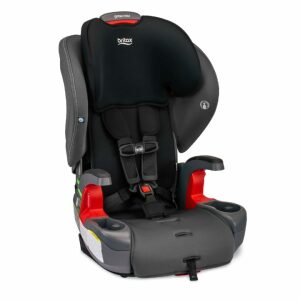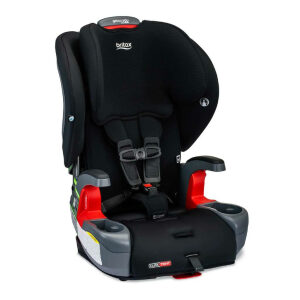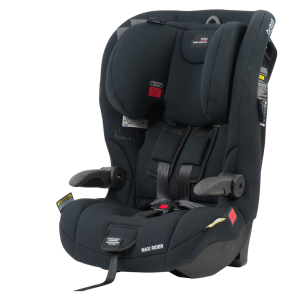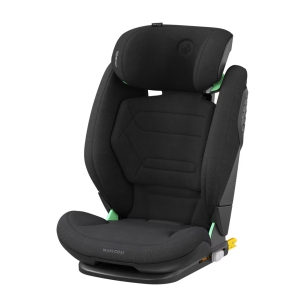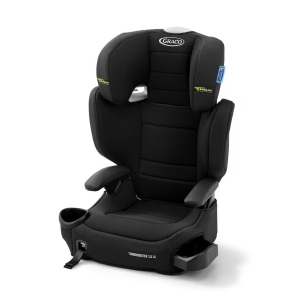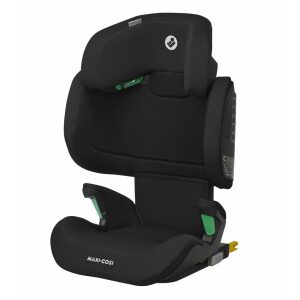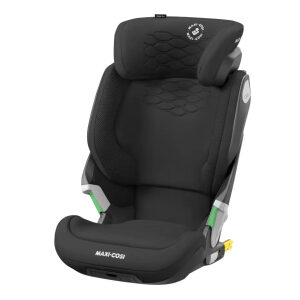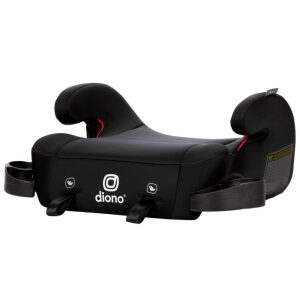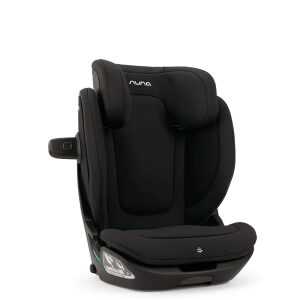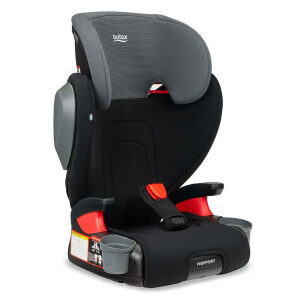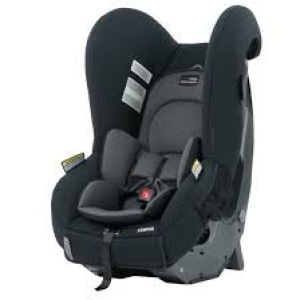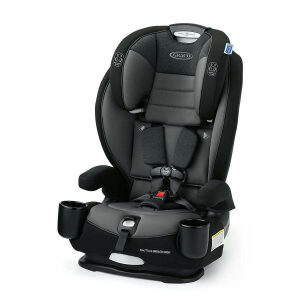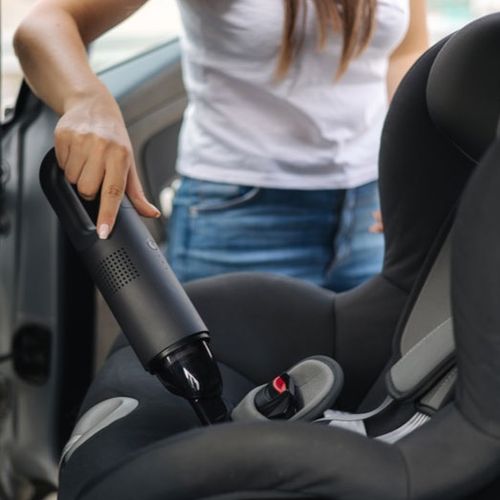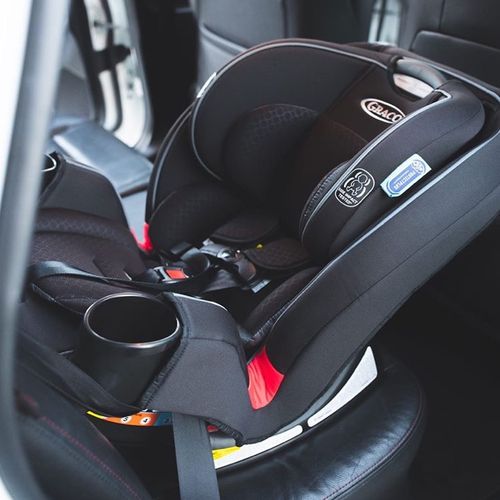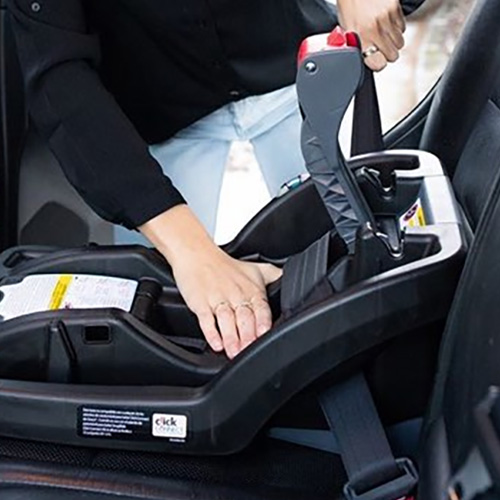Buyer's Guide to Child Restraints in New Zealand
By Baby On The Move – where little things matter.
Introduction
Choosing the right car seat is one of the most important decisions you’ll make for your child’s safety. Whether you’re buying or hiring a child restraint, this guide is designed to help you understand the key considerations, legal requirements, and best practices for keeping your child safe on the road in New Zealand.
As qualified and experienced Child Restraint Technicians, we’re here to help you feel confident in your choices – because when it comes to your little ones safety, every detail matters.
1. New Zealand Law & Best Practice
The Law:
In New Zealand, all children under seven years old must be correctly secured in an approved child restraint. If there is a child restraint available in the vehicle, they must use it when travelling until eight years old.
Best Practice:
While the law sets the minimum standard, best practice goes further to ensure the safest possible outcome for children’s safety in New Zealand:
- Keep your child rear-facing for as long as possible – ideally until at least 2 years of age or beyond. Choosing a car seat with higher height and weight limits will help you achieve this.
FACT: Children are up to five times safer when travelling rear-facing. In the event of a crash or sudden stop, a rear-facing restraint supports the head, neck, and spine, significantly reducing the risk of serious injury. At 1–2 years old, a child’s head makes up 25% of their body weight, compared to 6.5% in adults, meaning neck strength isn’t a reliable indicator of readiness for forward-facing.
- Use a 5-point harness until your child outgrows it by height or weight – ideally until around 4–5 years old. As a guide, look for harnessed seats that accommodate up to 18 kg rear-facing and up to 30 kg forward-facing.
- Only move your child to a booster seat when they are mature enough to sit correctly for the entire journey. They should be able to keep their back against the seat, knees bent over the edge, and feet flat on the floor without slouching or leaning. The seat belt must stay properly positioned across their shoulder and lap—never behind their back or under their arm. If they struggle to maintain this posture, they may still need a harnessed car seat for better support and safety.
Continue using a child restraint until your child reaches a standing height of 148 cm, usually between 10 and 12 years old. This ensures the vehicle seat belt fits safely across their thighs/pelvis and sits centered on their shoulder, without rubbing against their neck or slipping off.
2. Approved Restraint Standards in New Zealand
To be legally used in New Zealand, all child restraints – new or second-hand – must meet one of several approved safety standards. These standards ensure that car seats have been crash-tested in certified laboratories and provide reliable protection when used correctly.
Because New Zealand doesn’t manufacture or test car seats locally, we accept multiple international standards. You’ll find the certification label or sticker on the shell of the restraint, confirming it meets legal requirements.
- AS/NZS 1754 – Australian/New Zealand Standard
Restraints certified to this standard must use a top tether strap in both rear-facing and forward-facing modes, and often include a stabilising bar when rear-facing to limit seat movement. They feature a 6-point harness that secures your child at the shoulders, hips, and crotch. Buckle tongues are inserted separately for easier fastening. Restraint suitability is based on height markers and age, rather than weight. Flexible ISOFIX connectors became part of the standard from September 2014.
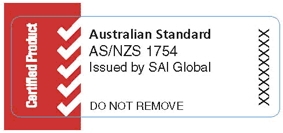
- FMVSS 213 NZ Standard ‘S’ marking – United States Standard
Restraints that comply with the USA standard (FMVSS 213) must, in addition to any other markings, also display the yellow NZ standard ‘S’ marking issued by Bureau Veritas. This shows the product has been produced to an approved standard for use in New Zealand.
Restraints certified to this standard use a single top tether strap in the forward-facing position only. They include a 5-point harness, securing the child at the shoulders, hips, and crotch, and often feature a chest clip (harness tie) to help keep the harness properly positioned. Buckle tongues are inserted separately, and many models include flexible ISOFIX connectors (known as LATCH in the US) for easier installation.
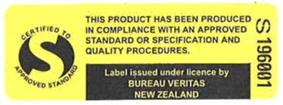
- ECE R44 or ECE R129 (i-Size) – European Standard
The UN ECE R129 is the newest UN car seat regulation, introduced in 2013. It is an improvement over the previous ECE R44.04 regulation, with the aim of making car seats easier to use and install, while offering enhanced side-impact protection—just to name a few of the key upgrades. Unlike the older standard which was based on weight, ECE R129 uses the child’s height as the primary guide for choosing a seat. It also introduced the i-Size category, which refers to restraints that are compatible with i-Size seating positions in approved vehicles.
Car seats under the ECE R129 or ECE R44 standards may use either a 3-point or 5-point harness system. Infant capsules typically use a 3 or 5-point harness (securing at the shoulders and crotch), while other harnessed seats use a full 5-point harness (shoulders, hips, and crotch). Most i-Size car seats feature a stability or support leg (especially in capsules and bases) to limit movement during a crash. Unlike other standards, many European restraints use rigid ISOFIX connectors and may not offer a seat belt installation option.
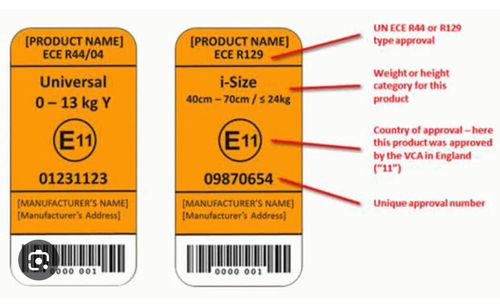
3. Types of Child Restraints
Different restraints suit different stages of your child’s growth:
- Capsule with Base (Infant Capsule):
Rear-facing only, capsules are ideal for newborns up to around 6 to 12 months of age. They’re especially convenient for lifting your baby in and out of the car. When used with a base that remains installed in the vehicle, the capsule can be easily clicked in and out—eliminating the need to reinstall the restraint each time. This makes daily use more convenient and provides peace of mind, knowing the base stays securely fitted for every journey.
Please Note: Many capsules can be attached to a compatible pram to create a travel system, which is great for short outings. However, capsules are not designed for extended use, as your baby is not lying fully flat. For longer periods, it’s recommended to use a carrycot or a fully-reclining stroller seat to support healthy positioning.
Tip: We highly recommend hiring your capsule and base from us—since they’re only needed for a short time, hiring is a cost-effective and more environmentally friendly choice. Click HERE for hire options.
- Out of Stock
 Select options This product has multiple variants. The options may be chosen on the product page
Select options This product has multiple variants. The options may be chosen on the product pageNuna ARRA Flex
$519.00 - Sale
Graco SnugRide SnugLock 35 LX with TrueShield
Original price was: $510.00.$399.00Current price is: $399.00.  Select options This product has multiple variants. The options may be chosen on the product page
Select options This product has multiple variants. The options may be chosen on the product page Select options This product has multiple variants. The options may be chosen on the product page
Select options This product has multiple variants. The options may be chosen on the product pageNuna PIPA Urbn
$619.00 Select options This product has multiple variants. The options may be chosen on the product page
Select options This product has multiple variants. The options may be chosen on the product pageMaxi Cosi Pebble 360 i-Size
$299.00- Out of StockSale
 Select options This product has multiple variants. The options may be chosen on the product page
Select options This product has multiple variants. The options may be chosen on the product pageNuna ARRA Next
Original price was: $519.00.$467.10Current price is: $467.10.
- Convertible Car Seat:
A convertible car seat is a versatile option that starts rear-facing for infants and later converts to a forward-facing seat. Many models accommodate children from birth up to around 4-5 years of age, depending on the seat’s specifications. This makes it a smart long-term investment, as it grows with your child and removes the need to buy separate seats for each stage.
- Online OnlySale
InfaSecure Momentum More ISOFix (Birth to 4 Years)
Original price was: $699.99.$399.00Current price is: $399.00. - Price MatchSale
 Select options This product has multiple variants. The options may be chosen on the product page
Select options This product has multiple variants. The options may be chosen on the product pageBritax One4Life® Slim ClickTight®
Original price was: $749.00.$679.00Current price is: $679.00. - Out of Stock
 Select options This product has multiple variants. The options may be chosen on the product page
Select options This product has multiple variants. The options may be chosen on the product pageMaxi Cosi Spinel 360 Plus
$699.00
- All-in-One Car Seat:
An all-in-one car seat is designed to grow with your child through multiple stages – starting as a rear-facing seat for infants, then converting to a forward-facing seat with a harness, and eventually becoming a booster seat that uses the vehicle’s seat belt. It’s a cost-effective option for long-term use. For smaller vehicles, always check that the seat fits properly in both rear and forward-facing modes to ensure safety and comfort.
- Out of Stock
 Select options This product has multiple variants. The options may be chosen on the product page
Select options This product has multiple variants. The options may be chosen on the product pageDiono Radian 3R Safe+
$549.00 - Price MatchSale
 Select options This product has multiple variants. The options may be chosen on the product page
Select options This product has multiple variants. The options may be chosen on the product pageDiono Radian 3RXT Safe+
Original price was: $599.00.$559.99Current price is: $559.99. - Exclusive
 Select options This product has multiple variants. The options may be chosen on the product page
Select options This product has multiple variants. The options may be chosen on the product pageGraco TrioGrow SnugLock 3 in 1
$569.00 - Price MatchSale
 Select options This product has multiple variants. The options may be chosen on the product page
Select options This product has multiple variants. The options may be chosen on the product pageBritax One4Life® Slim ClickTight®
Original price was: $749.00.$679.00Current price is: $679.00.
- Rotational Car Seats:
Rotational (or swivel) car seats are designed to turn on their base—typically 180° or 360°—making it easier to place your child into the seat and secure the harness. This feature is especially useful for caregivers with back or mobility concerns, or for those loading children into higher vehicles such as utes or larger SUVs.
Some models offer a 180° rotation to aid with loading, whereas others provide a full 360° rotation, allowing seamless transitions between rear and forward-facing positions while remaining installed. Many ECE R129 i-Size brands now feature “family-style” rotational base systems, where a single 360° base is compatible with both an infant capsule and a toddler seat—offering long-term value by reducing costs and simplifying transitions as children grow. Please note that the base and seats are typically sold separately.
Rotational seats are available in New Zealand under two approved standards: ECE R129 i-Size (Europe) and FMVSS 213 (USA). US-standard rotational seats often allow for extended rear and forward-facing use, especially when installed with the vehicle’s seat belt instead of ISOFIX.
As always, check the certification label, confirm vehicle compatibility, and follow the manufacturer’s instructions to ensure safe use.
- Out of Stock
 Select options This product has multiple variants. The options may be chosen on the product page
Select options This product has multiple variants. The options may be chosen on the product pageMaxi Cosi Spinel 360 Plus
$699.00  Select options This product has multiple variants. The options may be chosen on the product page
Select options This product has multiple variants. The options may be chosen on the product page Select options This product has multiple variants. The options may be chosen on the product page
Select options This product has multiple variants. The options may be chosen on the product page
- Harnessed Booster:
A harnessed booster is a forward-facing car seat that uses a built-in 5-point harness to keep your child secure. It’s perfect for children who have outgrown their rear-facing seat but are not yet big enough or mature enough to safely use the adult seat belt on its own. Many harnessed boosters can later convert into a standard booster seat, so you can use them for several years as your child grows. They’re typically suitable for children aged around 2 to 8 years, depending on their height, weight, and developmental readiness.
- Price MatchSale
Britax Grow With You – Mod Black – SafeWash
Original price was: $499.00.$449.00Current price is: $449.00. - Price MatchSale
 Select options This product has multiple variants. The options may be chosen on the product page
Select options This product has multiple variants. The options may be chosen on the product pageBritax Grow With You Clicktight Contour SafeWash
Original price was: $599.00.$549.00Current price is: $549.00.
- Booster Seat (Using Vehicle Seatbelt):
A booster seat positions your child so that the vehicle’s seat belt fits them safely and correctly—with the lap belt low on the hips and the shoulder belt across the chest. It’s suitable for older children, usually from around 5 years and up, who have outgrown their harnessed seat and can sit upright and still for the entire journey. Booster use is recommended until your child reaches 148 cm in height, which may be around 10 to 12 years of age. - Backless Booster (Half Booster Seat)
A backless booster seat, often called a half booster, performs the same essential role as a traditional booster but without the added back and head support. It helps position the lap belt low across the hips and the shoulder belt securely across the chest. While backless boosters provide a safe and practical option for older children from 6 years plus, they are best used in vehicles with high seatbacks or adjustable headrests that provide adequate head and neck support.
While convenient for travel and easy to switch between cars, a full booster remains the best option whenever possible, particularly for long trips, as it offers greater protection for the head and neck in the event of a crash.
Tip: Boosters or backless boosters with SeatFix/ISOFIX are safer because they securely anchor to the vehicle, preventing movement in a crash and ensuring stable belt positioning for your child.
 Select options This product has multiple variants. The options may be chosen on the product page
Select options This product has multiple variants. The options may be chosen on the product pageMaxi Cosi RodiFix Pro² i-Size
$399.00- Out of Stock
 Select options This product has multiple variants. The options may be chosen on the product page
Select options This product has multiple variants. The options may be chosen on the product page - Out of Stock
 Select options This product has multiple variants. The options may be chosen on the product page
Select options This product has multiple variants. The options may be chosen on the product pageDiono Solana 2 Half Booster
$105.00  Select options This product has multiple variants. The options may be chosen on the product page
Select options This product has multiple variants. The options may be chosen on the product pageNuna AACE LX
$529.00 Select options This product has multiple variants. The options may be chosen on the product page
Select options This product has multiple variants. The options may be chosen on the product pageBritax Highpoint Booster – Ombre
$299.00
4. Vehicle Fittings Needed for Installation
Understanding your vehicle is key to installing a restraint safely:
- Anchor Points:
Anchor points are built-in fittings in your vehicle designed to secure the top tether strap of a child restraint—an essential feature in many forward-facing and some rear-facing car seats. The top tether helps limit forward movement in a crash, providing an added layer of protection. If your car seat includes a top tether strap, it must be attached to a dedicated anchor point in your vehicle. These anchor points are typically found on the rear parcel shelf, vehicle seatbacks, or floor, depending on your vehicle’s make and model. Always refer to your vehicle owner’s manual to verify the location and suitability of anchor points, or reach out to our team—we’re happy to assist in identifying them and ensuring correct use.

- ISOFIX/LATCH:
The ISOFIX system (used in Europe and Australia) and the LATCH system (used in the USA) are alternative installation methods for child restraints that simplify the process and help reduce the risk of incorrect installation. These systems use built-in lower anchor points in the vehicle, located between the seat cushion and backrest (often referred to as the seat bight), which connect to corresponding attachments on the child restraint. Instead of being secured with the vehicle’s seat belt, the restraint is clicked directly into place, creating a more straightforward and often more secure installation.
ISOFIX and LATCH systems can use either rigid or flexible connectors, depending on the restraint. Many vehicles feature a label or symbol near the seat to indicate the presence of these anchor points. Some systems are used in combination with a top tether or support leg for added stability, depending on the restraint and the approved safety standard.
While these systems are becoming more common, not all vehicles in New Zealand are equipped with ISOFIX or LATCH—especially older models—so it’s important to check your vehicle owner’s manual or ask us for assistance in identifying anchor locations and ensuring compatibility with your chosen restraint.
It is important to note, once the maximum weight limit is reached for this method of installation, use the vehicle seat belt to install the car seat to ensure the maximum weight limit is being met. If a seat belt installation is not possible, selecting an alternative car seat will be necessary.
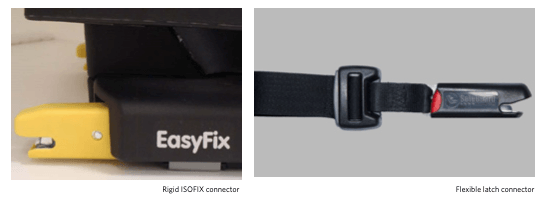
- Seat Belts
When installing a car seat with a vehicle’s seat belt, the belt must be correctly anchored, untwisted, undamaged, and securely buckled. Seat belts come in different types, and knowing how they function is key to a safe installation. Automatic Locking Retractors (ALR) lock when fully extended and are suitable for most car seats without extra hardware. Emergency Locking Retractors (ELR) only lock during sudden stops or crashes, so they often require a locking clip. Static belts, found in older vehicles, have no retractor and must be manually tightened.
Some modern car seats include an internal locking system, which clamps and holds the vehicle seat belt in place within the car seat’s built-in belt path. When using a seat with this feature, additional locking methods (such as locking clips) or engaging the seatbelt’s locking mode are not required—simplifying installation and reducing error.
Some seat belts are not suitable for use with car seats, including retractable lap belts (as they can’t lock securely), inflatable seat belts, seat belts that are attached to the vehicle door, and belts on seats that face the side or rear of the vehicle. These configurations do not provide the stability or crash protection required for child safety. If you’re unsure whether your vehicle seat belts are compatible, our trained team can help assess your setup and recommend the safest options.
Inflatable Seat Belts:
Inflatable seat belts are designed with built-in airbags that deploy in a crash to reduce the risk of injury by spreading crash forces across a wider area of the chest, neck, and head. While they look similar to standard seat belts, they are thicker, have a distinctive latch plate, and may have “Inflatable Belt” stitched into the fabric. These belts are most commonly found in the rear outboard seats of some Ford, Lincoln, and Mercedes-Benz models, though the middle seat usually does not have one.
Not all child restraints are compatible with inflatable belts, so it’s essential to check both the vehicle owner’s manual and the car seat manual before installation. Inflatable belts with a retractable lap portion are never suitable for securing a child restraint, as they cannot be properly locked or used with a locking clip. If your vehicle has inflatable seat belts, look for ISOFIX/LATCH anchor points as a safe alternative installation method.
Tip: If you’re unsure about compatibility or how to install a car seat safely with inflatable seat belts in your vehicle, our qualified team is always here to help.
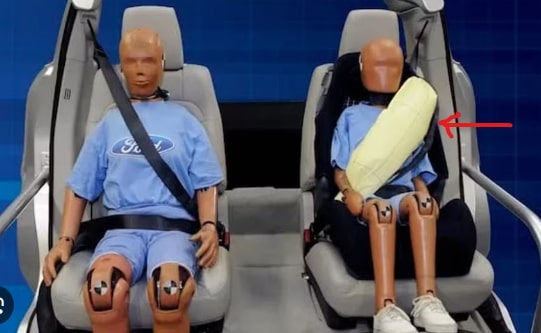
5. Placement in the Vehicle & Airbags
Where you place your child’s restraint in the vehicle can significantly affect their safety.
- Research shows that the centre seat in the back row is generally the safest position for a child restraint, as it offers the most protection from side impacts. However, this position isn’t always suitable—it may not accommodate the size or shape of the restraint, and in some vehicles, a raised or contoured seat or a centre armrest can interfere with proper installation, especially for rear-facing seats.
- If the centre seat is not practical or available, the next safest position is behind the front passenger seat. This location allows for easier access when placing or removing your child, especially when parked on the roadside—helping you load and unload safely from the footpath side of the vehicle.
- When travelling with multiple children, consider placing the baby restraint behind the driver (for easier monitoring while driving) and the toddler restraint behind the passenger seat so they can exit safely onto the footpath.
- The front passenger seat should only be used if the rear seats are unavailable or unsuitable. Never install a rear-facing restraint in front of an active front airbag, as this poses a serious risk of injury or death in a crash. If a forward-facing restraint must be installed in the front seat, always move the seat back as far as possible and check your vehicle and restraint manuals for guidance.
- Side airbags are generally safe to use with car seats, as most are designed with side-impact protection. However, the positioning and recline angle of the seat can still affect safety. If you’re unsure whether your vehicle’s airbag layout is suitable for your car seat, speak with our qualified team—we’re here to help.
- Airbag Seat Belts – See “Seat Belts” for details.
6. Buying vs Hiring – What’s Right for You?
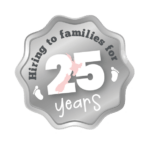
When choosing a car seat, it’s essential to consider not only the type of seat but also how long you’ll need it. Hiring can be a fantastic solution for short-term use, especially for infant capsules, which are typically needed for just 6–12 months. We provide access to high-quality, up-to-date car seats without the full purchase cost and offer flexibility for families—whether you’re expecting a new baby, visiting from overseas, or only need a car seat temporarily.
At Baby On The Move, all hired car seats are safety-checked, cleaned, and installed by qualified Child Restraint Technicians. With 15 locally owned and operated stores across New Zealand, you’ll be dealing with a team that understands local needs and is passionate about keeping your little ones safe.
With the widest selection, expert guidance in every store, and over 25 years of commitment to child safety, Baby On The Move sets the standard for car seat hiring in New Zealand.
- Sale
Graco SnugRide SnugLock 35 LX with TrueShield
Original price was: $510.00.$399.00Current price is: $399.00. - Exclusive
 Select options This product has multiple variants. The options may be chosen on the product page
Select options This product has multiple variants. The options may be chosen on the product pageGraco TrioGrow SnugLock 3 in 1
$569.00
Buying Second-Hand Child Restraints: What You Need to Know
Purchasing a second-hand car seat may seem like an affordable choice, but it comes with important safety considerations. Unless you know the full history of the restraint, it’s difficult to guarantee that it hasn’t been damaged, dropped, or involved in a crash. Even if a seat looks fine on the outside, hidden weaknesses, such as compromised plastics or a worn harness, can affect its ability to protect your child in an accident.
If you’re considering a second-hand restraint, it’s essential to check the expiry date, as all car seats have a limited lifespan, typically between 6 to 10 years from the date of manufacture. This is because over time, materials can degrade, especially when exposed to New Zealand’s heat and UV rays. The seat must also have its original certification label showing that it meets one of New Zealand’s approved standards (NZ/AU, ECE, or US displaying yellow S sticker), and it should come with the original instruction manual so you can be confident in correct installation and use.
Check out our Car Seat Expiry list here.
Always inspect the restraint closely for any signs of wear and tear, including cracks in the shell, frayed or twisted harnesses, and missing components. If the seat has been recalled by the manufacturer or lacks important safety features, it should not be used. For peace of mind, we strongly recommend purchasing new or hiring from a trusted provider like Baby On The Move. That way, you’ll know the seat is up to standard, in great condition, and safe for your child’s needs.
Tip: If you’re unsure, we offer a Checking & Fitting service to ensure your child’s seat is safe and installed correctly. Contact your nearest Baby On The Move store – we’re happy to help!
7. Professional Fitting Services
A properly installed car seat is essential for keeping your child safe on the road. That’s why our qualified Child Restraint Technicians at Baby On The Move are here to help.
We offer free professional installation when you buy or hire a car seat from us, ensuring it’s correctly fitted to your vehicle and adjusted to your child’s needs. If you’ve purchased your seat elsewhere, installation is available for a small fee, and bookings are essential.
Installing a car seat can feel overwhelming, especially for new parents. Our technicians don’t just fit the seat for you—they take the time to walk you through the process, so you feel confident reinstalling it yourself when needed. Whether you’re switching cars, renewing your WOF, or handling a curious older sibling’s mischief, we’ll make sure you’re prepared.
With every restraint purchase, you’ll receive three free professional installations plus ongoing free adjustments for the duration of any hire.
Our goal is to empower you to feel secure in your child’s safety—because while we’re always here to help, the driver is legally responsible for ensuring the seat is correctly installed.
We’ll make sure you get it right, every time.

8. When to Move to the Next Stage
Knowing when to move your child to the next stage of restraint is key to keeping them safe and comfortable. Always follow height and weight limits set by the manufacturer, and watch for signs that your child is outgrowing their current seat.
Here’s a quick guide to help:
- Capsule to Convertible/Rear-Facing Seat: Move to the next stage when your baby has reached the maximum height or weight limit of the capsule, or when their head is within 2–3 cm of the top of the seat shell. In some cases, your baby may still technically fit within the limits but begin to look cramped or uncomfortable—this is also a good indicator that it’s time to transition to a convertible or rear-facing seat that offers more space and support.
- Rear-Facing to Forward-Facing: Keep your child rear-facing as long as possible—ideally until at least 2 years old, or longer if they still fit within the restraint’s rear-facing limits.
- Forward-Facing to Booster: Transition when your child has outgrown the harness by height or weight and can sit maturely without slouching, leaning, or unbuckling.
- Booster to Seat Belt Only: The answer isn’t based on age alone—it depends on whether the seat belt fits correctly and your child can sit safely without additional support.
Your child is ready to move from a booster to using the vehicle seat belt alone when all of the following conditions are met:
- They can sit all the way back against the vehicle seat without slouching.
- Their knees bend comfortably at the edge of the seat, with their feet flat on the floor.
- The lap belt lies low across the top of the thighs, not riding up onto the stomach.
- The shoulder belt fits snugly across the chest, sitting between the neck and shoulder, not cutting into the neck or resting on the face.
- They can stay seated upright for the entire trip, without leaning forward, slouching, or tucking the belt under their arm.
Most children won’t pass this test until they reach a standing height of 148 cm, which for many happens between 10 and 12 years of age. Until then, continue using a booster seat to keep the seat belt positioned correctly—and your child properly protected.
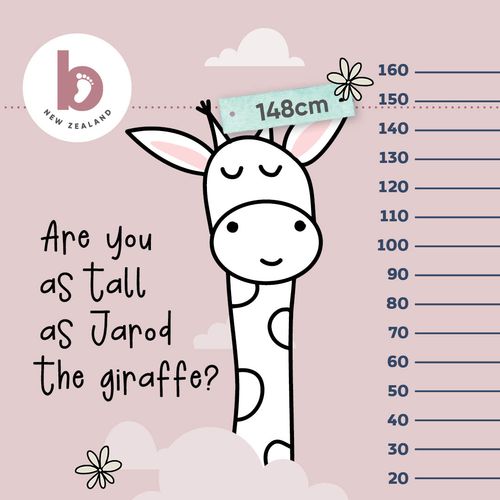
Choosing the right car seat can feel overwhelming, but you don’t have to do it alone. Our friendly, experienced team of qualified Child Restraint Technicians are here to help you every step of the way—from choosing the right restraint to installing it safely and confidently.
Visit your local Baby On The Move store for personalised advice, fittings, and support—because at Baby On The Move, where little things matter, your child’s safety is our top priority.
Frequently Asked Questions
The safest car seat isn’t about having the most features or a high price tag—it’s the one that fits your child, fits your vehicle, and can be installed and used correctly every time. At Baby On The Move, our experienced Child Restraint Technicians are here to support you in finding the right seat for your unique situation. We’ll help you navigate your options with expert advice, so you can feel confident your child is safe and secure on every journey.
Many infant capsules can be attached to strollers using adaptors, making them convenient for short trips. However, they are designed for transport—not prolonged sleep. Newborns with limited head and neck control should spend no more than 30 minutes in a capsule, as their proportionally large heads and developing airways make them more vulnerable to breathing issues in a semi-upright position.
For older babies and toddlers, up to 2 hours may be acceptable, but regular breaks are still important. To support healthy development and ensure clear airways, we recommend using a flat-reclining stroller or a carrycot for longer outings or naps on the go. Capsules are a convenient option—but for sleep, babies should always lie flat for optimal safety and comfort.
Deciding whether to hire or buy a car seat depends on your needs, budget, and how long you’ll use it.
Hiring is a great option if you:
- Need a car seat for a short period (for travel or visiting family).
- Want a cost-effective solution without committing to a purchase (capsule & base hire).
- Prefer a professionally installed seat? Our qualified car seat experts will install it for FREE, ensuring correct and safe installation.
Buying is ideal if you:
- Need a long-term solution for your child’s safety.
- Want a seat that fits your vehicle and child’s needs perfectly.
- Plan to use the seat for multiple children over time.
At Baby On The Move we offer both hire and purchase options, with expert advice to help you choose the best car seat for your situation!
It depends on your vehicle’s seat belt system. Most modern vehicles have seat belts that lock for car seat installation at the retractor or latch plate (ALR), so a locking clip is usually unnecessary. However, if your seat belt only locks during a sudden stop or crash (known as an Emergency Locking Retractor, or ELR), you’ll need a locking clip to keep the car seat securely in place while driving.
Some car seats have an in-built lock-off system, which may remove the need for a locking clip when using ELR seat belts. Infant capsules with bases will always require a locking clip for both ELR & ALR, unless the base has an in-built lock-off system.
Always check your vehicle manual to confirm your seat belt system and your car seat manual to confirm installation requirements. Still unsure? Our team is happy to help!
Legally in New Zealand, yes—but from a safety perspective, we strongly recommend keeping your child rear-facing for as long as possible. Rear-facing car seats provide crucial support to the head, neck, and spine during a crash or sudden stop, significantly reducing the risk of serious injury. This is especially important for young children, as their developing bones and muscles make them more vulnerable to impact forces.
Studies show that children are up to five times safer rear-facing compared to forward-facing. Many modern car seats allow extended rear-facing use, some up to 18 kg or more, which typically accommodates children between 2–4 years of age.
At Baby On The Move, our Child Restraint Technicians can help you choose the best seat to follow best practice guidelines and keep your child as safe as possible for longer.
It depends on where you’re travelling. New Zealand accepts a range of international child restraint standards, but not all countries do the same. Some destinations only allow car seats that meet their own national safety regulations, meaning your seat may not be legally used—even if it’s considered safe here.
If you’re travelling to Australia, only Australian/New Zealand Standard-approved car seats are permitted. Seats complying with European or American standards cannot be used in Australia, even if they are legal in New Zealand.
If you’re travelling to Europe, you’ll need a car seat that meets EU safety standards, while in the United States, only US-standard car seats are legally accepted.
Additionally, local taxis or hire cars may not have compatible fittings, such as ISOFIX or tether anchor points, which could make installation difficult so it’s important to check.
If your car seat isn’t approved for use to your destination country, Baby On The Move offers hire car seat options, ensuring your child travels safely without the worry of non-compliant restraints.
Before travelling, always check child restraint laws in your destination country and speak with our team about travel-friendly options. We’re here to help you travel safely and confidently with your child!
Yes, but it depends on the airline and the type of car seat. Many airlines allow FAA-approved car seats or the CARES-certified airline harness, which we hire, providing a safe and familiar restraint for young children during the flight.
If you plan to use a car seat on board, check for an airline approval sticker on your seat or refer to your car seat manual to confirm it’s certified for air travel. The seat must also fit within the airline’s size restrictions and be installable with the aircraft seatbelt in a forward-facing position only. Some airlines require advance notice or approval, so always confirm with your airline before flying.
In New Zealand, Civil Aviation Rules require that infants under two years old be secured by a Supplemental Loop Belt when seated on an adult’s lap. However, approved car seats are a safer option, especially for children under 20 kg, as they provide better protection during turbulence or an emergency.
If you don’t plan to use the car seat during the flight, you can check it in as baggage—but using a protective car seat bag, which we sell, will help prevent damage.
For more guidance on travel-friendly car seat options, our team at Baby On The Move is happy to help!
What should I know about safety in driveways?
Driveway incidents can happen in seconds and are sadly too common in New Zealand. On average, five children are seriously injured or killed in driveway accidents each year. These tragedies often occur when a child is out of sight behind or near a vehicle, and the driver is unaware before reversing or moving off.
To prevent driveway accidents:
– Always check around your vehicle before moving, even if you think no children are nearby.
– Ensure children are safely buckled inside the car or fully supervised when outside.
– Create safe play areas away from driveways and teach children to stay clear of parked or moving vehicles.
– Consider installing rear-view cameras or sensors in your vehicle to improve visibility.
A moment of caution can prevent tragedy. Raising awareness and taking simple precautions can help keep children safe around vehicles.
No, this is completely normal and not a reason to switch to forward-facing. As children grow, their legs may bend, cross, or touch the vehicle seat while rear-facing. Children are naturally flexible and tend to find comfortable positions—even if they look cramped to adults.
Leg contact with the seat does not increase the risk of injury in a crash. Rear-facing provides superior protection for the spine, head, and neck, even when legs are bent. The greatest risk in a collision is to the upper body, not the legs.
Keeping your child rear-facing as long as they fit within the seat’s height and weight limits is one of the best ways to keep them safe while travelling.
It depends on your vehicle’s width, seat design, and car seat models. Some vehicles can accommodate three car seats across, but space limitations and seat contours may make installation challenging. Larger vehicles, such as SUVs and vans, often provide better space for three car seats, but some sedans and hatchbacks can also accommodate them with the right seat choices.
To fit three car seats safely:
- Check your vehicle’s manual—some models have wider back seats designed for multiple restraints, while others may have a middle seat that does not support child restraints due to seat design or lack of anchor points.
- Use slim car seats—narrower models help maximize space without compromising safety. However, some seats may be positioned closely together, they should not interfere with each other’s installation or function.
- Be mindful of crossover seat belts—some vehicles may have seat belt placements that cross over one another, making installation trickier. In these cases, checking your car seat manual is very important.
- Ensure proper installation—each seat must be securely fitted using either ISOFIX or seat belts, and/or tether anchors.
- Test the setup—before purchasing or hiring, try installing three seats to confirm they fit safely without crowding. Measuring the restraints width alone is not enough to confirm if they will fit safely and compliantly across the vehicle seats.
Still unsure? Our team at Baby On The Move can help! Book a 3-across consultation with our child restraint expert to find the best setup for your vehicle and your little ones.
Your child has outgrown their car seat when they exceed the height or weight limits set by the manufacturer. These limits are listed in your car seat manual and should always be followed for safety.
Here are key signs that it’s time to move to the next stage:
- Rear-facing seats – Your child’s head is less than 2.5 cm from the top of the seat, or they exceed the weight limit.
- Forward-facing seats – Your child’s shoulders sit above the highest harness slot, they exceed the weight or height limit, or their eyes and ears reach the top of the seat.
- Booster seats – They pass the five-step test, meaning the adult seat belt fits correctly across their shoulder and lap.
In New Zealand, children must use an approved child restraint until they are at least seven years old, but best practice recommends keeping them in a booster seat until they reach a standing height of 148 cm tall.
If you’re unsure whether your child is still fitting their car seat safely, reach out to one of our qualified Child Restraint Technicians for advice—we’re here to help.



